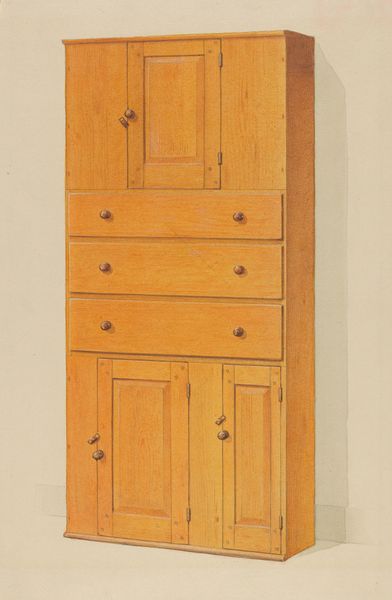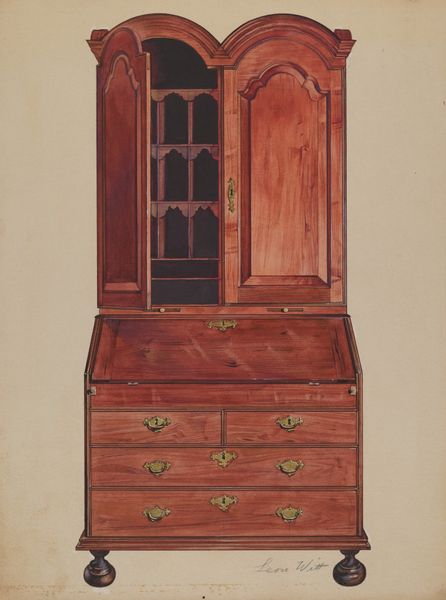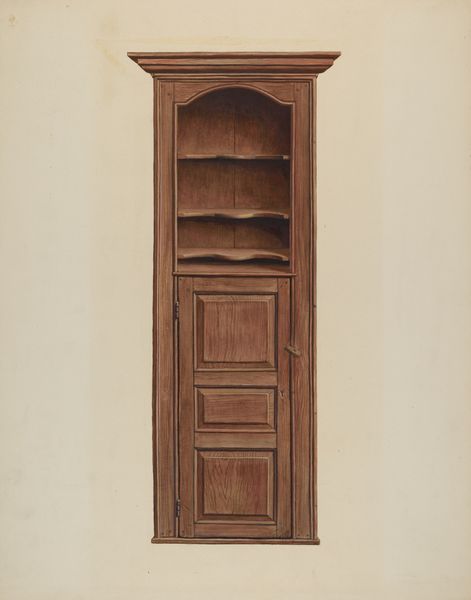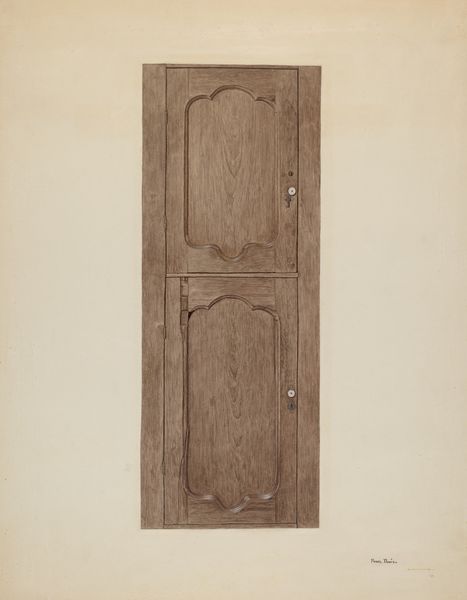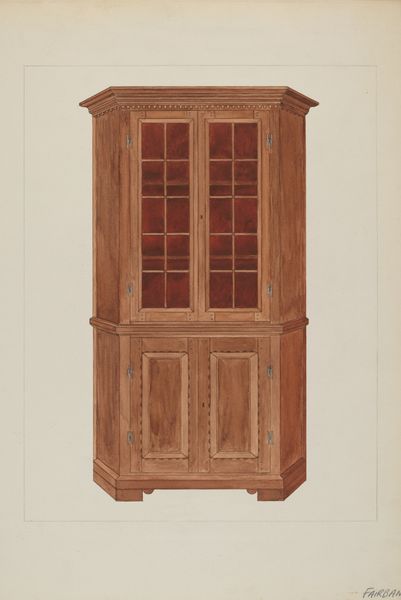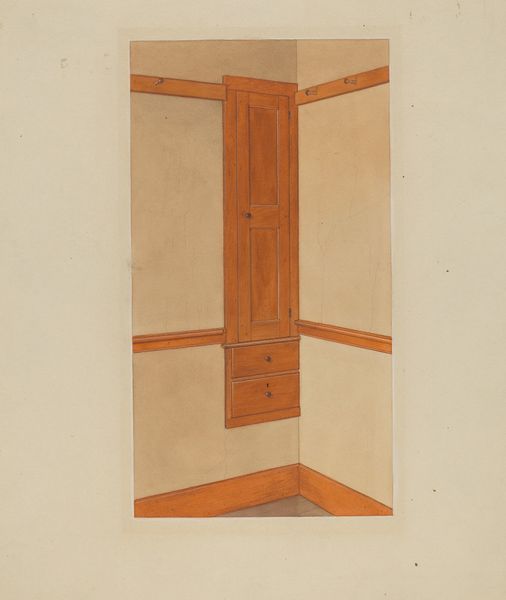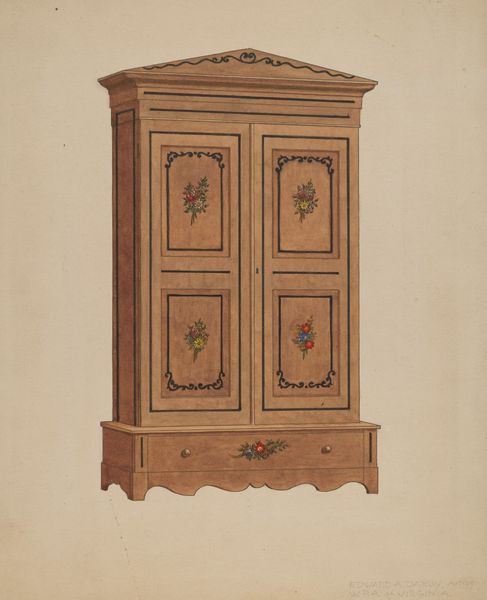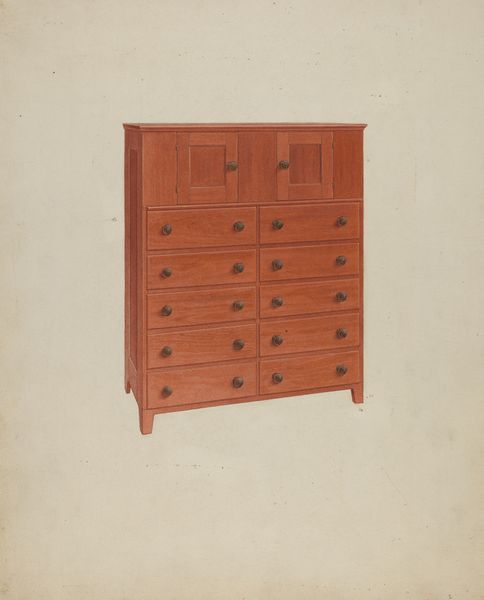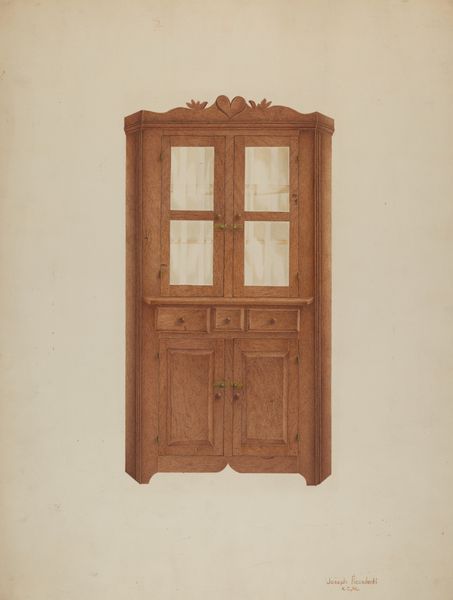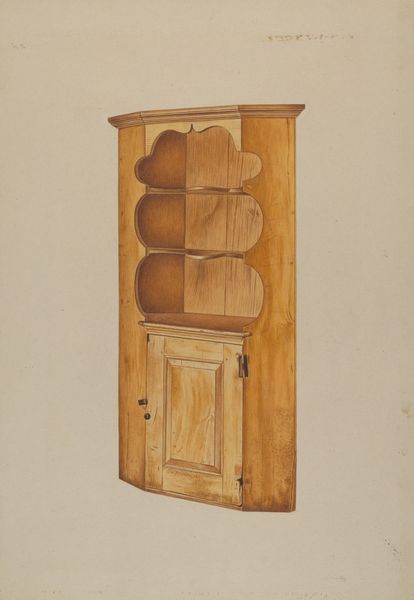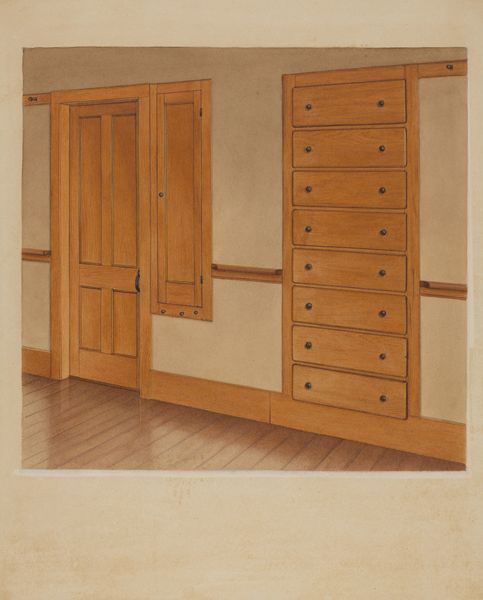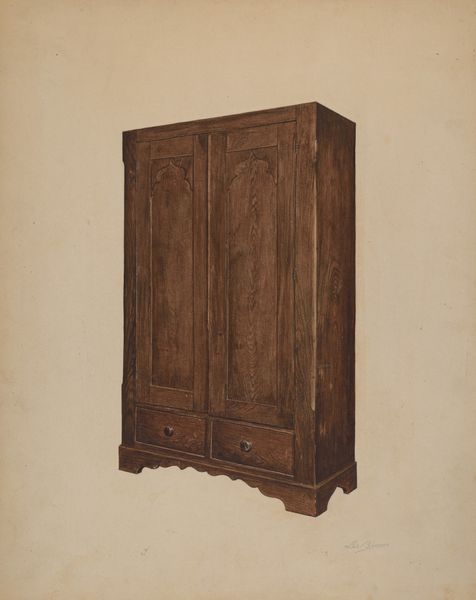
drawing, wood
#
drawing
#
furniture
#
wood
#
realism
Dimensions: overall: 28 x 22.8 cm (11 x 9 in.)
Copyright: National Gallery of Art: CC0 1.0
Editor: Here we have Alfred H. Smith’s "Shaker Cabinet with Drawers," circa 1936, rendered in drawing and wood. There’s something so solid and practical about its form. I am struck by the almost relentless repetition of drawers, hinting at a deeper order and efficiency. What stands out to you about this piece? Curator: Immediately, I'm drawn to the craftsmanship. The Shakers were deeply invested in the processes and materials involved in their furniture making. The very act of selecting, shaping, and joining the wood was an act of worship, right? They believed honest materials and honest labor honored God. What do you notice about the drawing itself? Is it just a depiction of the cabinet? Editor: It does seem straightforward, a clean representation of the object itself. Almost like a blueprint, now that you mention it. It invites you to consider how it would have been constructed. The smooth surfaces… it's begging to be touched, isn’t it? Curator: Exactly! The materiality isn't just aesthetic; it's intrinsically tied to the Shaker values of simplicity, utility, and perfection. Consider the social context too; the Shakers were a utopian community, their furniture reflecting their commitment to a communal, highly structured life. Were there many Shaker communities back then? Editor: I think they were already declining in numbers by the early 20th century, weren't they? This piece then acts as a sort of archive. Preserving something of their ways and beliefs. Curator: Precisely. The "Shaker Cabinet" becomes more than mere furniture, it's a document of a specific labor ethic and a tangible remnant of a vanishing social experiment. It allows us to reflect on the intersection of craft, community, and consumption. Editor: So, seeing this artwork is about more than its beauty; it’s about understanding the world that created it and the values embedded in its creation. Thanks! Curator: Absolutely! And appreciating that every object, even the simplest cabinet, embodies a complex history of production and social meaning.
Comments
No comments
Be the first to comment and join the conversation on the ultimate creative platform.
